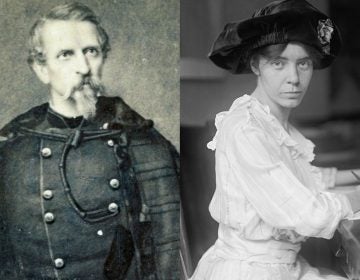At the Constitution Center, who made the 19th Amendment, and who was left out
The National Constitution Center in Philadelphia opens its exhibition on women and voting on the 100th anniversary of the passage of the 19th Amendment.
Listen 1:51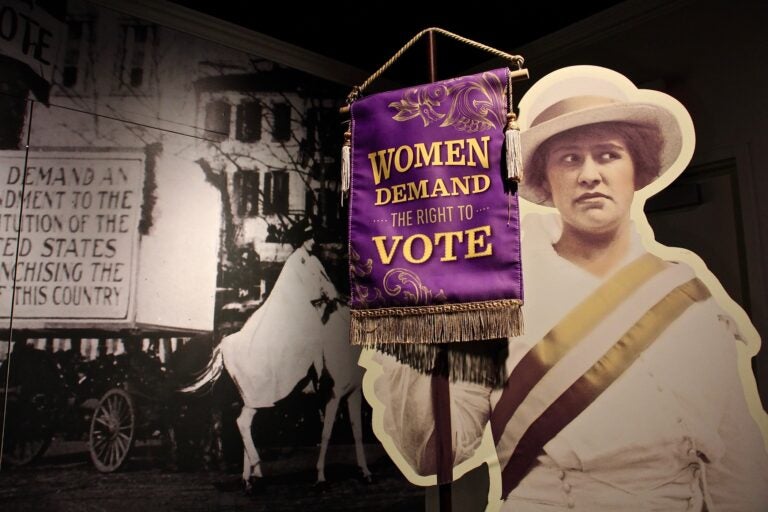
'The 19th Amendment: How women won the Vote,' opens at the National Constitution Center after a long delay caused by the COVID-19 epidemic. (Emma Lee/WHYY)
The new exhibition at the National Constitution Center, tracks the suffrage movement, from the landmark 1848 convention for women’s rights in Seneca Falls, N.Y., to the ultimate passage of the 19th Amendment in 1920, ensuring women in every state had the right to vote.
“The 19th Amendment: How Women Won the Right to Vote” includes iconic images of large gatherings of women wearing long dresses and big hats picketing in the streets with signs reading “Votes for Women.” The exhibition has a wall filled with historic posters, postcards, flyers, and lapel pins from the 1910s when the popularity of the movement was at its height.
But it was not such a unified effort as it might have appeared. Black women are not often seen in those historic images.
“The story we’re traditionally told is that this was one single movement, it moved in one direction over the course of 70 years, and we get to the 19th Amendment,” said Elena Popchock, director of exhibitions at the National Constitution Center. “Really, there were so many elements to that. An acknowledgment of racism is very important to do, particularly today.”

The struggle for women’s rights goes back centuries, but in America, it gained traction on a national level at the Seneca Falls convention. At the time, the right to vote was not at the forefront, but rather the right for married women to own property and keep their wages.
Philadelphia abolitionist Lucretia Mott, for example, was not interested in voting, believing that participating in the political system would make a woman complicit with institutional slavery.
“Far be it from me to encourage women to vote or to take an active part in politics in the present state of our government,” wrote Mott in 1849. She was part of a radical wing, which included newspaper publisher William Lloyd Garrison, who believed the political system was fundamentally flawed.
“The origins of the women’s rights movement is in abolitionist causes,” Popchock said. “The two are intertwined.”
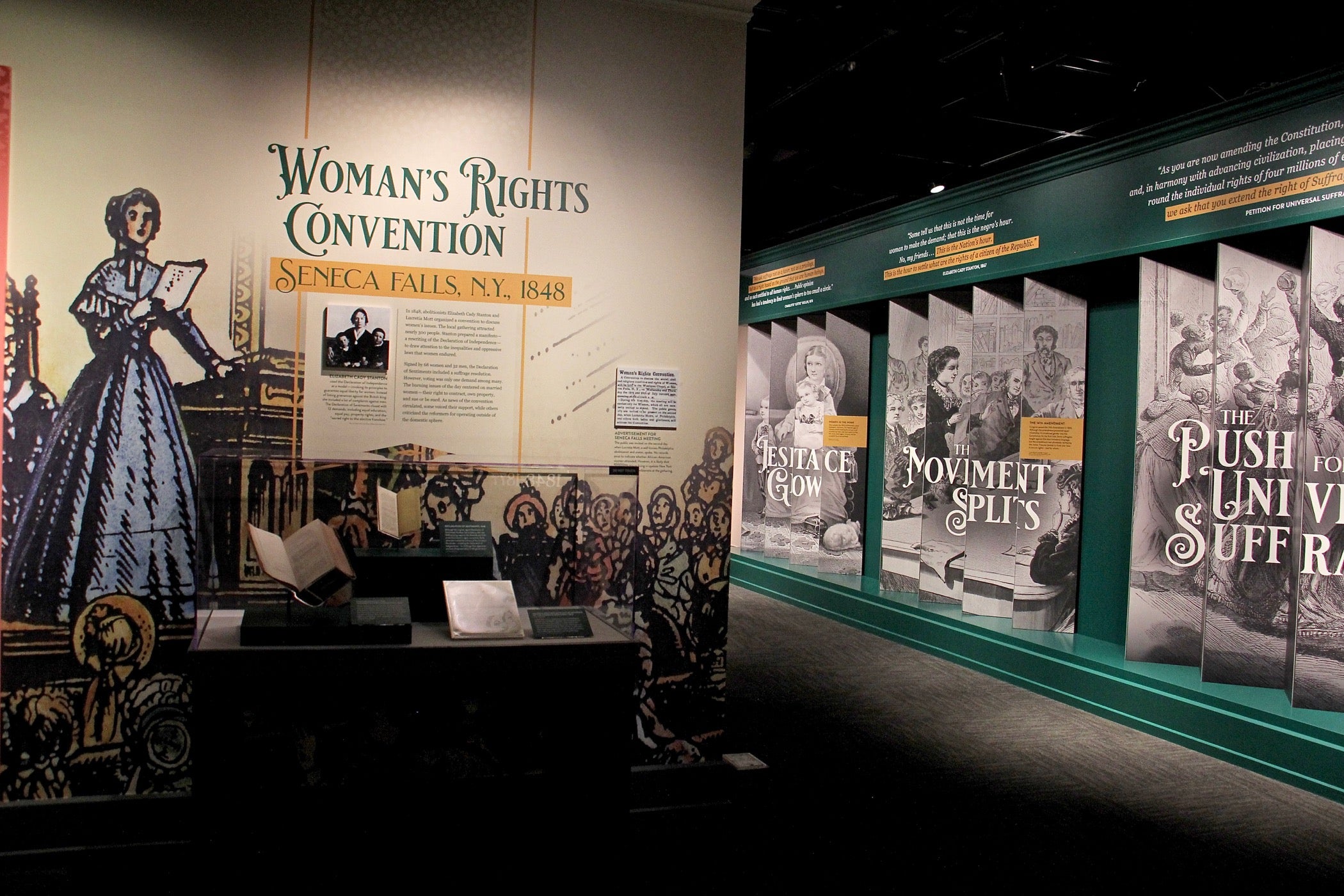
When the 15th Amendment was introduced after the Civil War, which would give Black men the right to vote, white women who had been pushing for universal suffrage felt slighted.
“People like Elizabeth Cady Stanton and Susan B. Anthony refuse to support the amendment. They break away,” Popchock said. “They start pursuing votes for white women only, and particularly educated white women.”
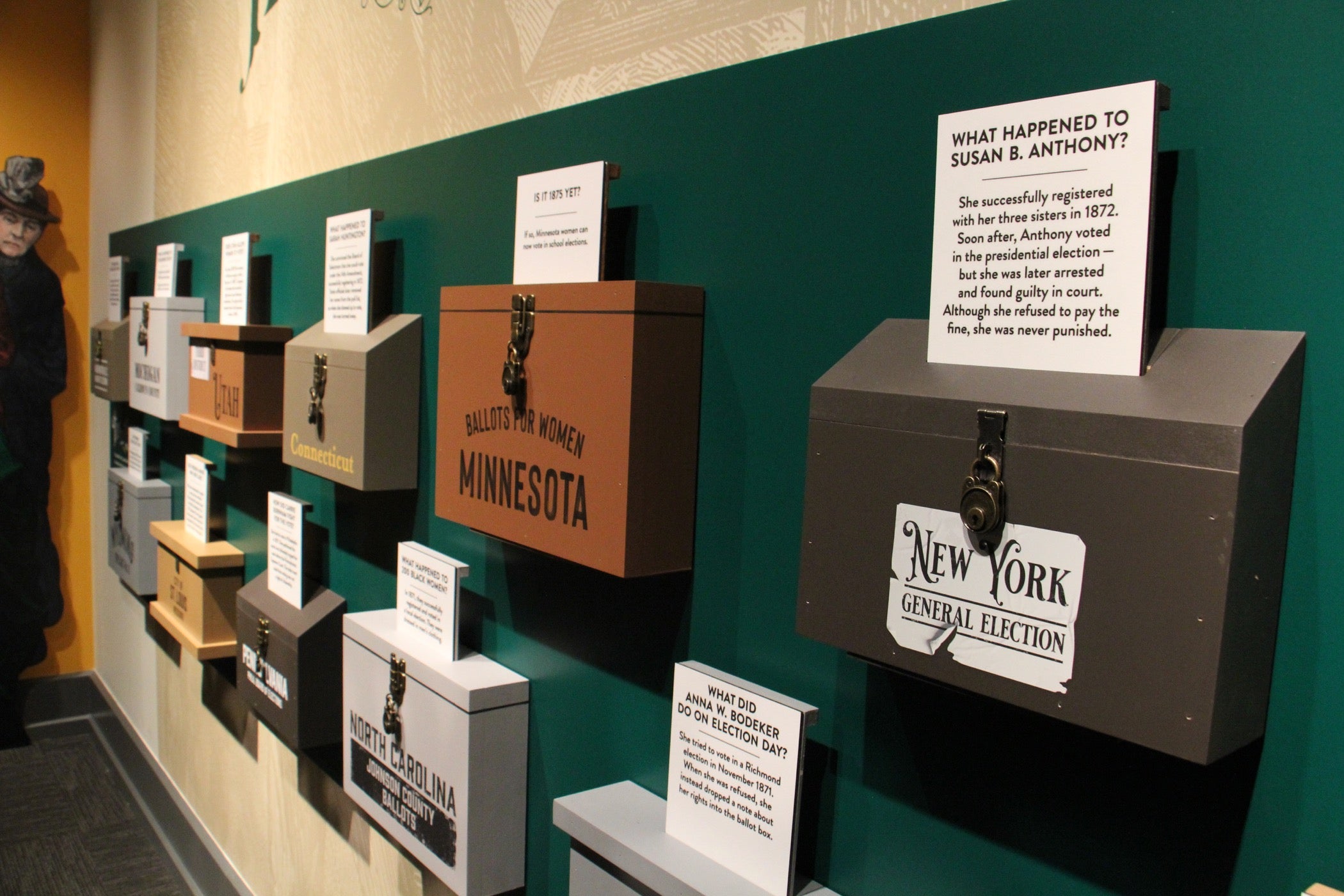
The movement developed a racial divide: white women walked the street carrying signs, Black women tended to work inside their own communities to advocate in less visible ways for the right to vote.
Once the 19th Amendment was ratified in 1920, many Black women still could not vote. Many states, particularly in the South, had their own local polling laws barring certain people from voting. Black women were usually in that group.
It took another 45 years, until the Voting Rights Act of 1965, before many Black women could cast a ballot.
The exhibition at the National Constitution Center was over a year in the making as Popchock and her staff researched material objects to put on display, crafted the narratives, and developed interactive exhibits. It was supposed to open in June, but the coronavirus pandemic had forced the NCC to close its doors to the public in the spring.
Now open again, the NCC chose the 100th-anniversary date that certified the ratification of the 19th Amendment, August 26, to launch its exhibition. But with the pandemic still an active public health threat, the interactive displays had to be modified. No more touch screens, no more hands-on displays. Instead, there are large-screen animated graphics that play in a loop. A wall of mock-voting boxes with personal stories inside are now locked, with the printed story fixed to the outside.
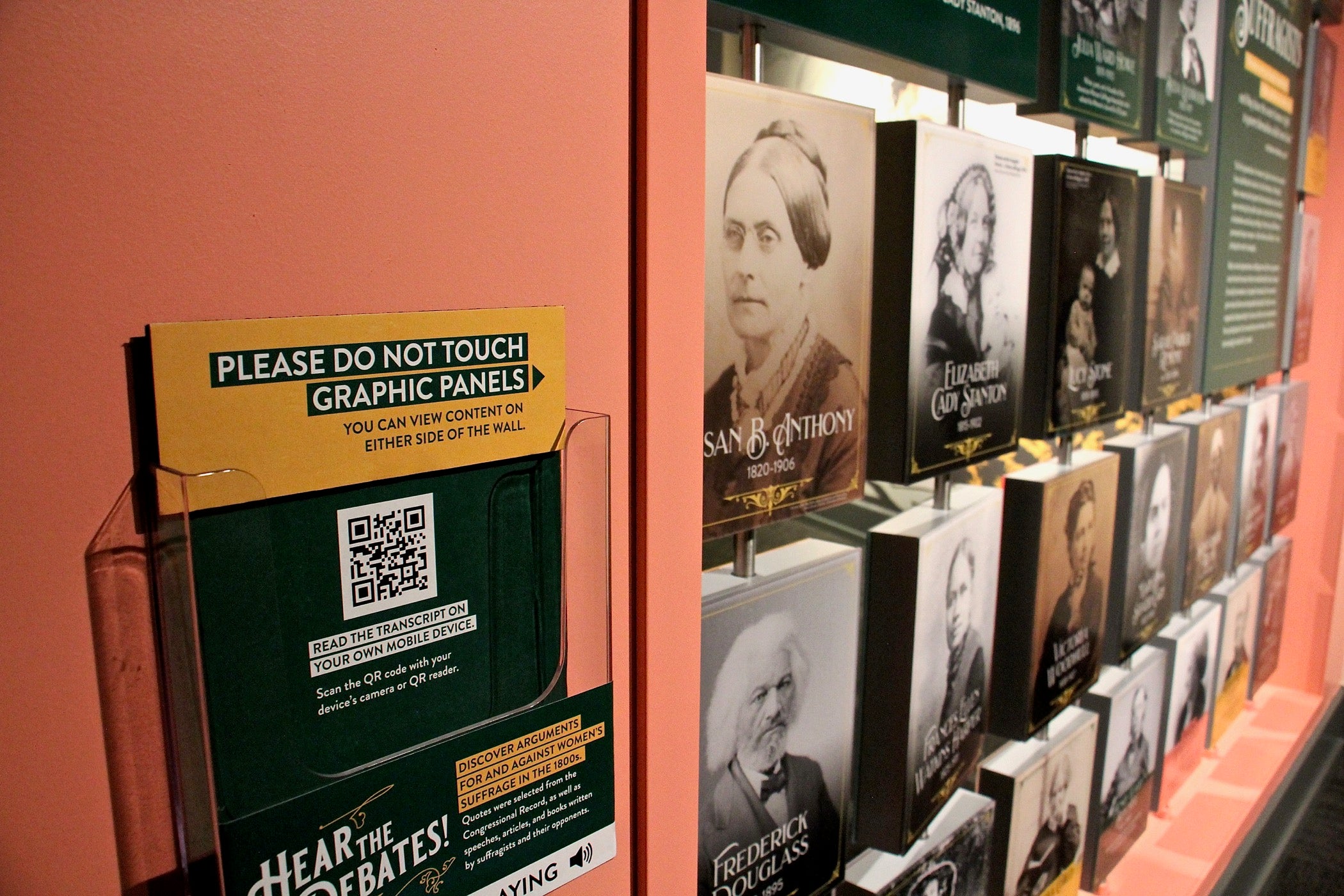
A display that asks who really won the right to vote in 1920, which required the visitor to grab hold of a lever and pull a series of answers out of a kiosk, was eliminated entirely.
The run of the exhibition is open-ended, with no scheduled closing. Crossing fingers: it may outlast the pandemic.
“Hopefully one day we can return them to the exhibition as touchable interactive moments,” Popchock said.
In the meantime, the digital interactive elements are available online, both on the visitor’s phone while in the exhibition space, via posted QR codes, and on the Constitution Center’s website accessible from a home computer.

Get daily updates from WHYY News!
WHYY is your source for fact-based, in-depth journalism and information. As a nonprofit organization, we rely on financial support from readers like you. Please give today.





